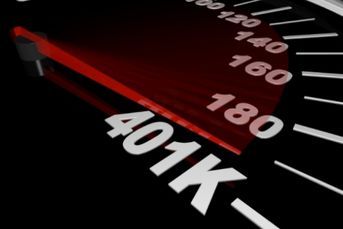The 99 percent: NYSE breaks trades in Andarko after shares plunge
Stock price of oil producer briefly plummeted from $87.56 to 1 cent; 'blips and issues'
The New York Stock Exchange broke trades in Anadarko Petroleum Corp. (APC) after the shares briefly plunged 99 percent in the final minute of Friday’s session.
The transactions drove Anadarko, the second-largest U.S. independent oil and natural gas producer with a $45 billion market value, down to 1 cent. The stock then recovered and closed at $90.03, up 2.5 percent for the day. NYSE Euronext canceled trades executed at or below $87.56, according to an emailed statement from the exchange.
“With technology and trading there’s always going to be blips and issues,” Ben Schwartz, the Chicago-based chief market strategist at broker Lightspeed Financial Inc., said by phone. “I’m sure the exchange is going to do the right thing in rectifying the situation. The exchanges have a pattern of doing what’s fair and balanced in these situations.”
The trades weren’t subject to the new system of limiting swings in individual stocks on American exchanges, a program known as limit-up/limit-down, because they came after 3:30 p.m. New York time, when the restrictions are lifted. The changes are going into effect gradually for stocks and will be expanded to the full trading day in August.
Under limit-up/limit-down, trades aren’t allowed to occur at more-than-specified percentages above or below a stock’s rolling five-minute average price.
One-Cent Trades
The 26 trades at 1 cent occurred on the NYSE where the shares are listed, according to data compiled by Bloomberg. John Christiansen, an Anadarko spokesman, declined to comment and referred questions to the NYSE. Rich Adamonis, a spokesman for the NYSE, declined to comment beyond the statement from the exchange.
The Securities and Exchange Commission is seeking to limit technology breakdowns at venues handling stock, options and bond trades and ensure they can withstand malfunctions that could jeopardize markets. Regulators and exchanges are altering former speed bumps adopted after the May 2010 flash crash to boost confidence in a market that has become faster and more complex over the last decade.
U.S. stock exchanges and the Financial Industry Regulatory Authority, which oversees almost 4,300 brokers, introduced curbs for individual stocks after the flash crash to halt shares when they rise or fall at least 10 percent in five minutes. The new system is likely to cause fewer halts, the SEC said last year.
Stocks began adopting the limit-up/limit-down plan on April 8. All companies in the Standard & Poor’s 500 Index and Russell 1000 Index and more than 400 exchange-traded products are included in the program.
–Bloomberg News–
Learn more about reprints and licensing for this article.






